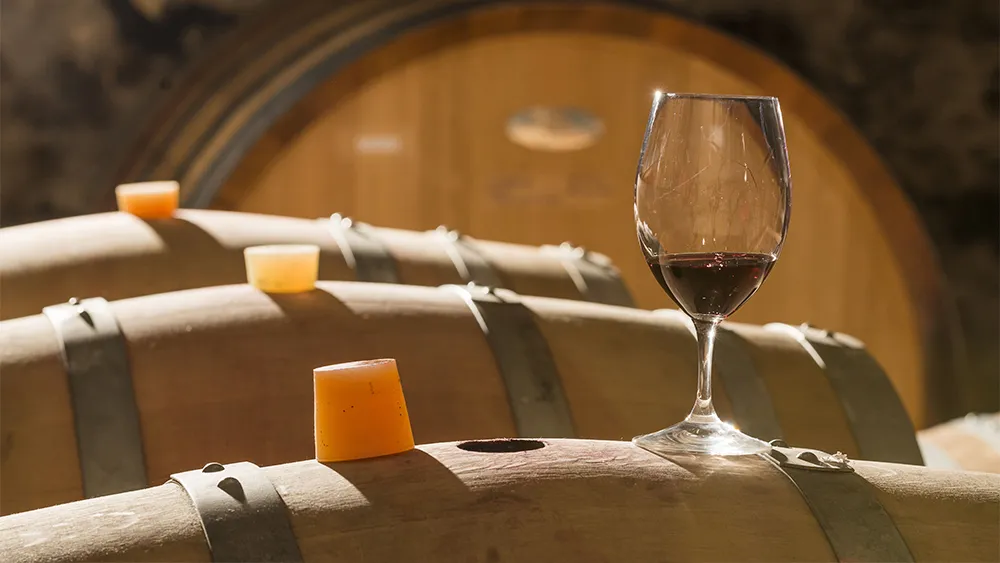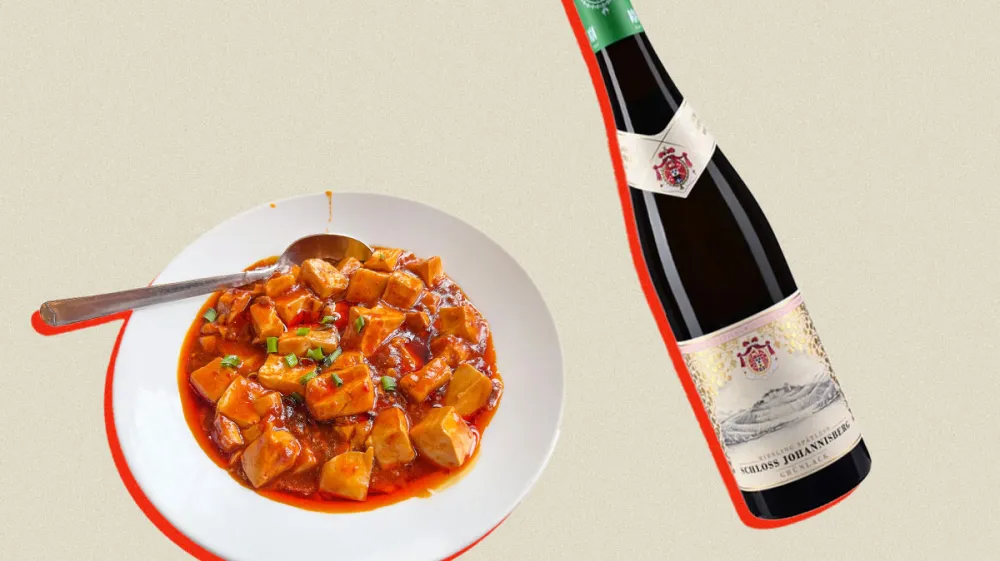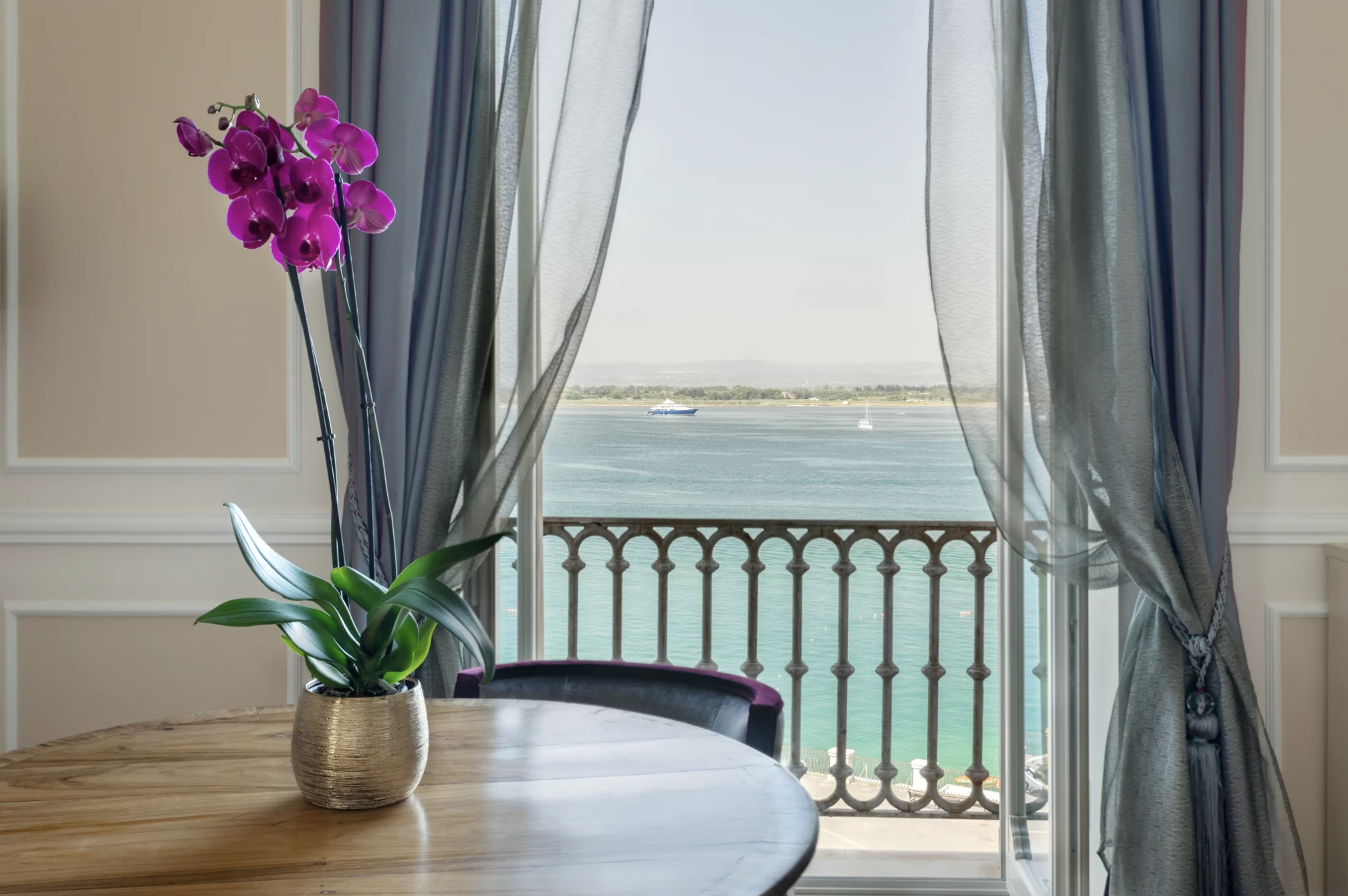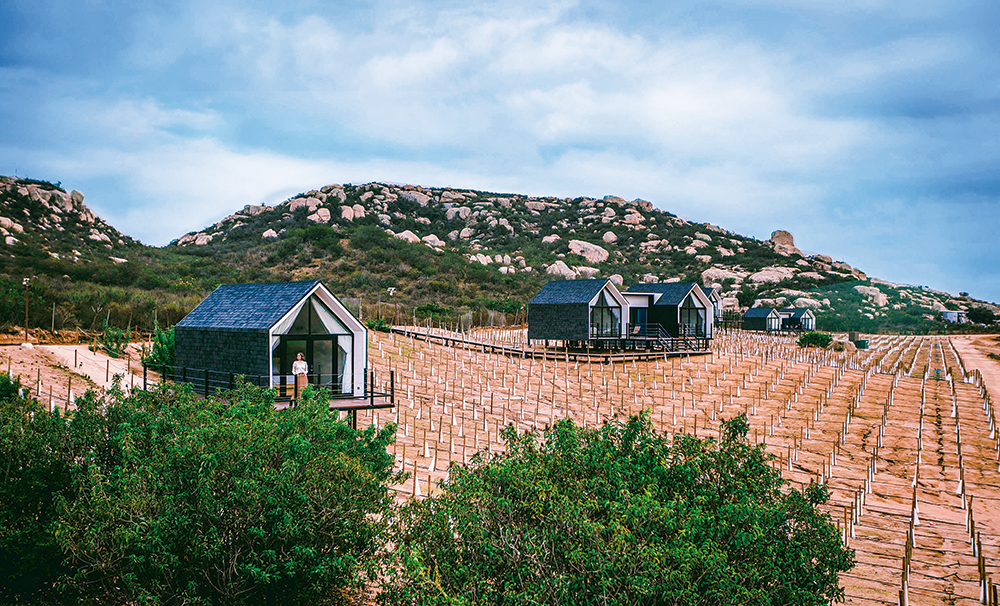
The New Worlds Of Wine
Changing weather and emerging fortunes are conspiring to create promising vineyards in wholly unexpected places. But where will your next bombshell bottle come from?
Related articles
The world of wine has always operated on its own schedule—greatness takes time. It generally requires many seasons for a vineyard to mature to the point at which the vines produce wine with serious ageing potential. In the big picture, some European regions have spent a millennium or more refining the taste profiles of their bottlings.
But the combination of rapidly evolving technology, emerging international economies and the progressing effects of climate change has scrambled the traditional map and fast-forwarded the timeline. There’s now good wine from Virginia, Israel and Brazil, but some countries we know and love—including our very own Australia —have regions that are likely to struggle to continue producing the excellent wine we’re used to because of heat, drought and fires. But amid the chaos some happy surprises, with a number of previously overlooked countries and areas set to ascend.
Georgia
Georgian wine may present the perfect blend of storied past and exciting future. “It’s an ancient tradition, at least 8,000 years old,” says John Wurdeman, an American wunderkind impresario of Georgian grapes. But history isn’t what’s motivating the newest fans in the US. “American hipster wine bars are serving orange wines from there, made in clay pots, to rebel against the status quo Bordeaux and Napa wines they think are boring.” True enough—the bottles are popping up at places like wine bar Ten Bells on New York’s Lower East Side, as well as at the Michelin-starred Washington, D.C., restaurant Maydān.
Wurdeman cofounded Pheasant’s Tears, a boutique natural winery that makes 15 or 16 different bottlings every year. It’s the Georgian winery with perhaps the most US snob appeal, but it’s not alone; wine imports from Georgia to the US almost doubled this past year over 2018. Wurdeman employs the most distinct tradition of the country, fermenting all his wines in qvevri, the traditional clay pots that are buried in the ground.
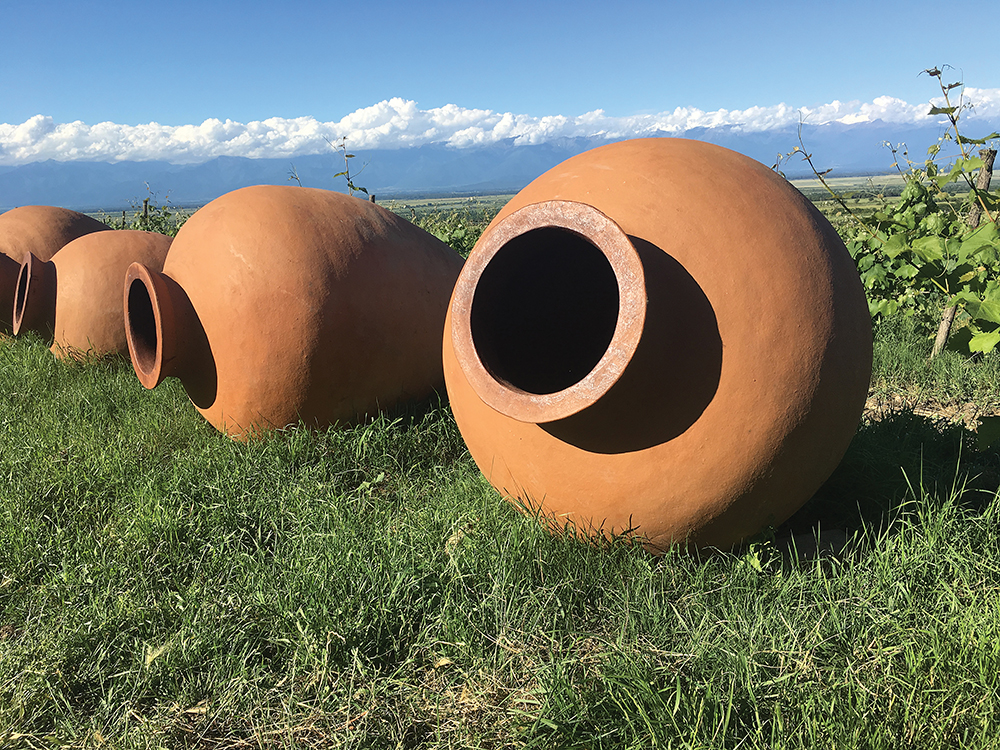
The old ways are part of Georgia’s unique story, but so are modern winemaking techniques—even though it has taken a while to shake off the stagnation of 70 years under Soviet domination, which did no favours for the wine industry.
“It’s not an easy history” is how Wurdeman puts it. Lisa Granik, who holds a prestigious master-of-wine title and wrote a book on Georgian wine, travels there often and says that, slowly, “Georgia is entering the modern world.”
Since the country has some 500 varieties of grapes, you can give up now on getting a handle on the full range of Georgian offerings, but among white, you’ll see Mtsvane, Kisi and Rkatsiteli grapes; among reds, Saperavi, which Granik calls the “Syrah of Georgia.” But, says Wurdeman, “if people try one Georgian wine, it’s often orange, since so many of our grapes lend themselves to that expression.”
His Pheasant’s Tears 2018 Mtsvane Amber Wine is an example of the quirky, intense and appealing style, which more people are discovering. It’s no wonder that Granik says, “In a generation, we’ll see more varieties and better quality. The best Georgian wines are yet to come.”
Valle de Guadalupe, Mexico
In the past five years, the idea of wine from Mexico went from crazy-sounding to very enticing. A mere 110-kilometre drive south of the US-Mexico border on the Baja Peninsula is the Valle de Guadalupe, where some 150 wineries, mostly small operations, have sprouted up to take advantage of wine-friendly conditions. The region produces 90 per cent of the country’s wines.
Most well-established wine regions have rules and customs governing what gets made, but Guadalupe is in a position to experiment and see what works.
“It reminds me of Paso Robles 15 years ago,” says Tomás Bracamontes, who has become a major importer of the wines through his company, La Competencia Imports. “There are no rules. You can do anything you want. Some people are making Pinot Noir and others Rhône blends.” Bracamontes’s money is on the white grape Chenin Blanc as far as up-and-comers go, and “Tempranillo is doing really well,” he adds, referring to Spain’s great red export.
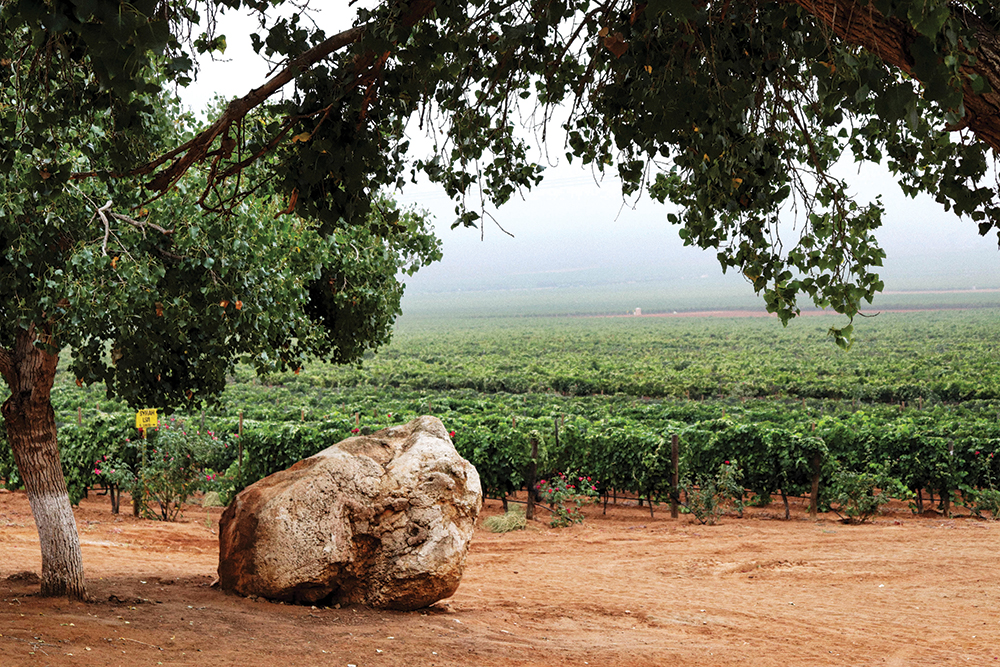
The wineries may be small, but they’ve caught the eye of industry power players. Lourdes Martinez Ojeda became a talked-about winemaker with her work for Bodegas Henri Lurton, a Valle de Guadalupe venture of Bordeaux’s renowned Lurton family (they make Château Brane-Cantenac and many others).
“Having this great Bordeaux family down there has really helped,” says Jeff Harding, the beverage director at the Waverly Inn in New York.
Harding, who visited the region last year, quickly became a fan, putting Guadalupe wines on his list. He compares the climate to some familiar California regions.
“It’s hot in the day, but it’s between two mountain ranges, so it cools right down at night. It’s comparable to Napa.” (Others say the torrid climate of the Priorat area in Spain is closer to the mark.)
Harding’s primary recommendation is about taste: “Bigger, riper fruit” is the overall profile compared to other places. “They’re approachable and great to drink,” he adds, “and it doesn’t hurt that they go great with Mexican food. Without a doubt, we’ll be seeing more of these wines in 20 years.” Keen to try something you won’t get anywhere else? Sample the natural-style bottlings from La Casa Vieja: Made from the original rootstock—some of the vines are 120 years old—the wines are funky, fascinating and distinct.
Okanagan Valley, British Columbia
The emerging Canadian region making the biggest impression on global palates is the Okanagan Valley in British Columbia, the southern portion of which lies just across the border from Washington State. And the valley will be only more influential in the coming years.
It’s a long, skinny area oriented on a north-south axis: In the north, it’s cooler, and Pinot Noir and Riesling grapes thrive; in the south, much hotter and a home to Bordeaux red grapes such as Merlot and Cabernet Sauvignon. “There are so many places that make good Cab, but I loved the Riesling from Martin’s Lane,” says James Tidwell, master sommelier and co-founder of Texsom, an influential conference of sommeliers. “I brought some back from my trip—and I never do that.”
The region’s prime mover is Anthony von Mandl, owner of Martin’s Lane, Mission Hill winery and three other properties that he calls the “Iconic Wineries” of BC. “They’re all managed independently,” says von Mandl, “in the same way LVMH has 75 fashion brands.” Among the best of Mission Hill’s wines is the 2012 Oculus, a silky and rewarding Bordeaux-style blend. Another in von Mandl’s portfolio, CheckMate 2015 Little Pawn Chardonnay, scored 100 points from well-regarded Canadian critic John Schreiner; it also happened to nab the vote of former vice president Al Gore, who ordered two cases before that review was out. The irony of Gore’s connoisseurship does not escape von Mandl: “Little did he know it was enabled by climate change.”
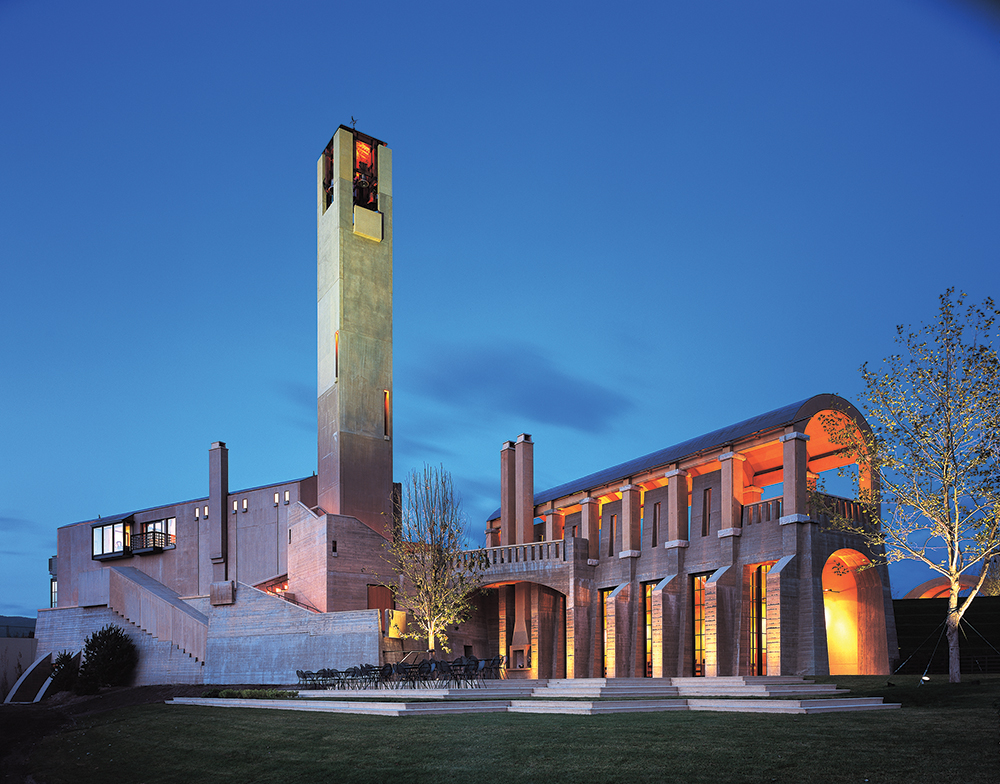
England
Over the past 30 years the bubblies have popped up in various parts of southern England, where climate change has created perfect conditions for making sparkling wine. The vintners explicitly model their businesses after Champagne, planting that region’s three grapes: Chardonnay, Pinot Noir and Pinot Meunier.
Hampshire’s Hambledon Vineyard, founded in 1952 and acquired in 1999 by former investment banker Ian Kellett, started selling sparkling wine in 2014.
“He saw the potential in the chalky soils here, just like in Champagne,” says Hambledon’s education manager, Katrina Smith. She adds that the winery’s bubblies are in a “broader, richer style” than those of similar English wineries, and that all the grapes come from nearby estate vineyards that Hambledon owns, giving the winery more control over the product.
The chief winemaker of another sparkling winery, Nyetimber, cautions against too simplistic a view regarding warming temperatures. “It’s really climate chaos,” states Cherie Spriggs. “In 2012 we didn’t harvest a single grape. It was the coldest conditions since we’ve been keeping records.”
It’s the cooler-than-most conditions that are generally why people like these wines and it helps explain Nyetimber’s elegant drops (its Blanc de Blancs is superb), which have been winning blind tastings against Champagne, which is deeply satisfying for Spriggs: “That’s our benchmark.”
India
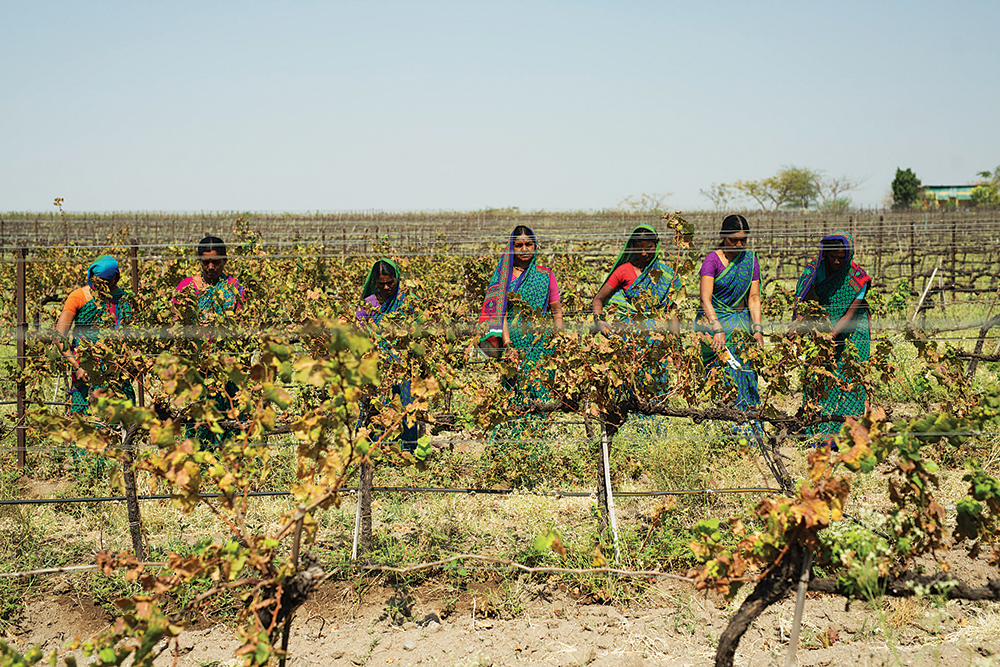
Despite ancient traditions of winemaking, India’s more a beer-and-spirits kind of country. But thanks to some wealthy entrepreneurs, things are starting to happen when it comes to premium wine.
Pharmaceutical tycoons Krishna Prasad and Uma Chigurupati established Krsma Estates in 2008 in Hampi Hills, a hot, dry inland area, which Prasad cheerfully concedes is “not a wine region.” But in his travels he stumbled upon a farmer who was growing wine grapes there and realised how good the conditions were. Krsma now produces three wines a year including a fairly classic Cabernet Sauvignon that’s been commended at international wine competitions. Now making 5,000 cases a year, Prasad notes that his “ego” dictates that the wine be exported too. “It’s a passion and a hobby for me,” he says, “not a business.”
Founder of Fratelli Vineyards’ Sette label, Kapil Sekhri, has similar inspirations. But he’s taken a decidedly cooperative approach: He makes Fratelli’s wines in India, with grapes from the Maharashtra region not too far from Mumbai, but he does it in partnership with Tuscan winemakers Piero Masi and the Secci family. And the wines have been praised by the respected British critic Jancis Robinson.
Sekhri also partners with French-born, Napa-based winemaker and entrepreneur Jean-Charles Boisset, to make three Indian wines under the J’noon label, the best of which is the white, a blend of Chardonnay and Sauvignon Blanc.
This story comes from our latest Autumn 2020 issue. To purchase a copy or to sign up to an annual subscription of Robb Report Australia & New Zealand click here. To stay in touch with all the latest news click here.
Subscribe to the Newsletter
Recommended for you
Minerality in Wine, Explained: How It Affects Taste, Aroma and Texture
And an exploration of the regions that produce great mineral-driven varietals.
By Mike Desimone And Jeff Jenssen
May 7, 2024
The Ultimate Guide to Pairing Wine With Spicy Food
What to drink when your favorite cuisine brings the heat.
You may also like.
You may also like.
Minerality in Wine, Explained: How It Affects Taste, Aroma and Texture
And an exploration of the regions that produce great mineral-driven varietals.
If you have taken part in a wine tasting, read an article about wine, or even glanced at the back label of a bottle of wine, you have likely encountered the word minerality. But defining what that means exactly is where the problems can start—even wine experts disagree on what it is and how it expresses itself in the glass.
Minerality refers to a flavour profile and often a palpable sensation in the mouth. The flavours generally involve rocks or fossils, such as stone, river rock, flint, gravel, slate, asphalt and oyster shell. There is also a sense of salinity, often derived from volcanic soils, that is a component of mineral-driven wines. This is different from other earthy flavours such as forest floor or peat. When we host tastings, very few people will own up to having licked rocks as a child, but almost everyone has gotten a stray bit of oyster or clam shell in their mouth and can recall the taste and texture. Most of us can remember the scent of a chalkboard or pencil lead from our childhood, and even those who have never fired a gun are familiar with flint or gunpowder from firecrackers.
When minerality is discussed, it is often a quality ascribed to white wine such as Riesling, Assyrtiko, Sauvignon Blanc or Burgundian Chardonnay. We may not hear about minerality in red wine so much because the oak used for maturation may mask the flavours and aromas associated with minerality. However, two reds sometimes described as having mineral qualities are those from the volcanic soils of Mount Etna in Sicily and the shale and quartz vineyards of Priorat in Spain. A prime example of the mineral-driven style is Chablis in the northernmost reaches of Burgundy, whose wines are made with 100 percent Chardonnay. The wines have a distinctly different character than the oaky, buttery style prevalent in Napa Valley and further south in Burgundy.
Walking through the vineyards of Chablis you can see abundant fossilised oyster shells that date back 150 million years to the Upper Jurassic period, when this area was at the bottom of the sea. Dig a bit; you will find calcified ammonites and spiral-shaped cephalopods from the same era. While vineyard soil is a discussion for another day, the grey limestone here is called Kimmeridgian, named for the village of Kimmeridge in Dorset, England, where it was first identified. As Thierry Bellicaud, president of Domaine Laroche in Chablis told Robb Report, “The Kimmeridgian limestone soil, which is unique to this area, delivers all needed nutrients for the balance of the vines. The terroir nurtures the vines which then express its personality in the grapes.”
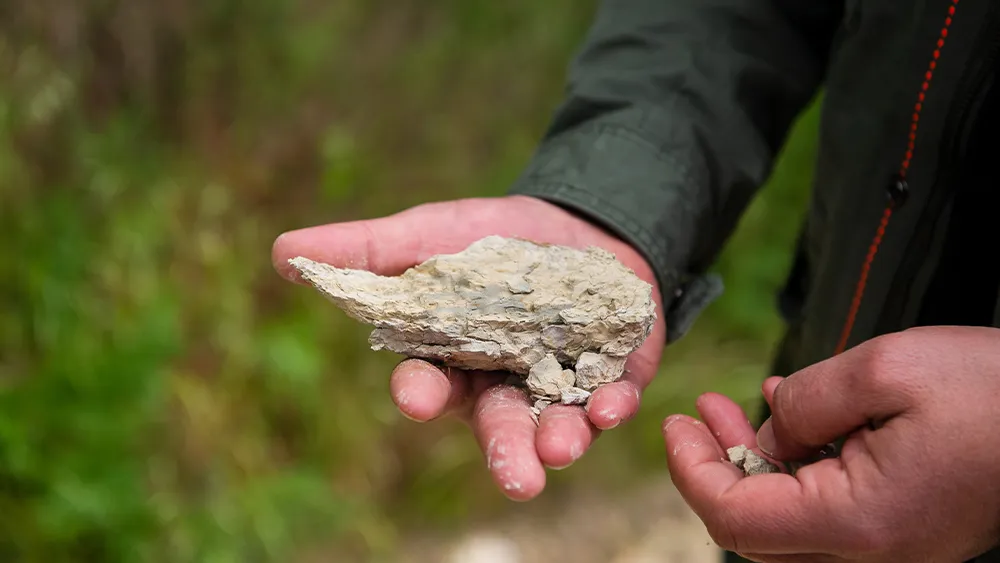
DOMAINE LAROCHE, CHABLIS, FRANCE
Asked how soil composition influences one of Domaine Laroche’s wines, Bellicaud referenced its Chablis Grand Cru Les Blanchots, “Les Blanchots is a unique terroir made of a layer of white clay on Kimmeridgian limestone with ammonites. This is the ideal combination to keep the right amount of water for the roots. The southeast exposure allows slow ripening and favours aroma development. It is one of the areas in the appellation where you can easily find oyster fossils (called Exogyra virgula). The Grand Cru Les Blanchots is delicate, refined and silky in texture.”
Assyrtiko from Santorini is almost always described as possessing a mineral quality as well as a touch of salinity, which can be attributed to the black volcanic soil in which it grows as well as to the Aegean Seaspray that wafts over the island’s vineyards. Mosel Valley Riesling’s leanness and flinty character come from the red and blue limestone in which it is cultivated.
Italy’s Soave region is also known for the minerality of its wine. Alessio Inama, third-generation family leader and director of sales, marketing and communication at Inama Azienda Agricola, told Robb Report, “Soave Classico is a volcanic region with soil made up of basaltic rocks, volcanic tuffs and ashes that date back 30 million years. The soils offer minerals in their natural form, which impact the composition of the plants themselves. In the case of grape vines, the soils have a major influence on the resulting flavours of the wines, which are mineral and floral.”
Known for their scrupulous mapping of micro-plots within their vineyards, the Inamas produce several different Soave wines made with the Garganega grape. Inama I Palchi Foscarino Grande Cuvée Soave DOC is crafted from the family’s best plots on Monte Foscarino. Inama explained, “The soil of Foscarino is a mix of pure magma, ashes and basaltic rocks that deteriorated over millions of years into a dark clay that is extremely rich in minerals. The grapes from those 40-year-old vines have strong personality, great intensity and texture, delivering a complex bouquet of white flowers, citrus notes and flinty sensations.”
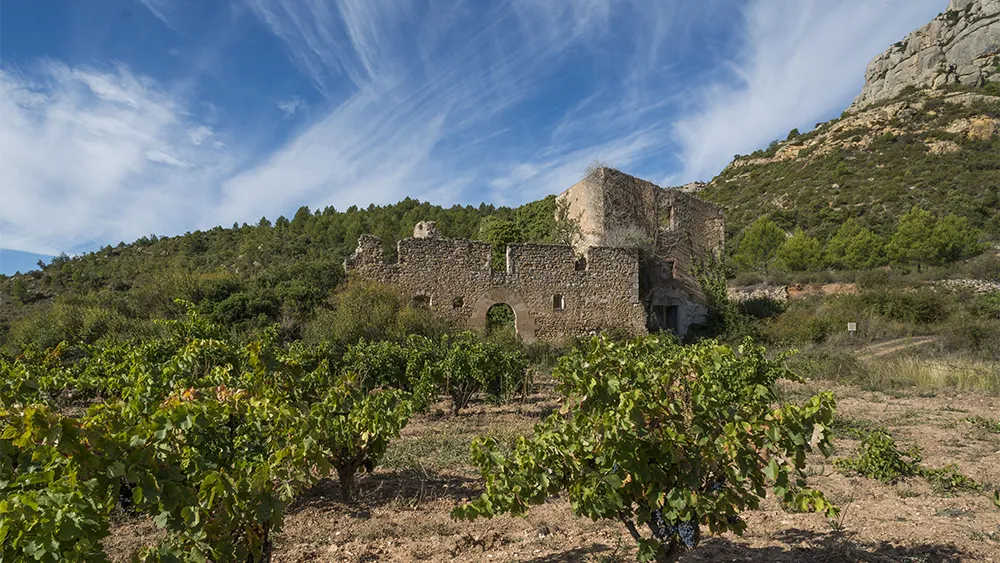
SCALA DEI, PRIORAT, SPAIN
While the sensation of minerality can be less obvious in red wines, Spanish Garnacha and Sicilian Nerello Mascalese are two grapes that often exhibit it, thanks to both the locales from which they hail as well as the often-judicious use of oak. The slopes of eastern Sicily’s Mount Etna are covered with volcanic soils composed of pumice, black ash and basalt. Priorat, a region close to Barcelona in northeast Spain, is blessed with black quartz, slate and mica soils called llicorella. Here you will find vineyards covered with small fragments of black and grey striated rock sitting atop blue and red soils embedded with the same.
Ricard Rofes, winemaker at Scala Dei in Priorat, refers to its Mas Deu vineyard as one of the winery’s “jewels.” The origin of Scala Dei Tribut and Masdeu, it sits 800 meters (2,625 feet) above sea level. Rofes told Robb Report, “In this elevated area the clay and limestone soils are ideal for growing Grenache, giving the wine that touch of acidity and freshness that makes it unique. The red-clay soils and the altitude of the vineyards located in the lap of the Sierra de Montsant give it freshness and the llicorella soils impart a genuine imprint. Our wine is the pure expression of the fruit and the terroir with a distinct personality.”
You may also like.
Best of Europe: Six Senses, Switzerland
Mend in the mountains at Crans-Montana.
Wellness pioneer Six Senses made a name for itself with tranquil, mostly tropical destinations. Now, its first alpine hotel recreates that signature mix of sustainable luxury and innovative spa therapeutics in a world-class ski setting.
The ski-in, ski-out location above the gondola of one of Switzerland’s largest winter sports resorts allows guests to schuss from the top of the Plaine Morte glacier to the hotel’s piste-side lounge, where they can swap ski gear for slippers, then head straight to the spa’s bio-hack recovery area to recharge with compression boots, binaural beats and an herb-spiked mocktail. In summer, the region is a golf and hiking hub.
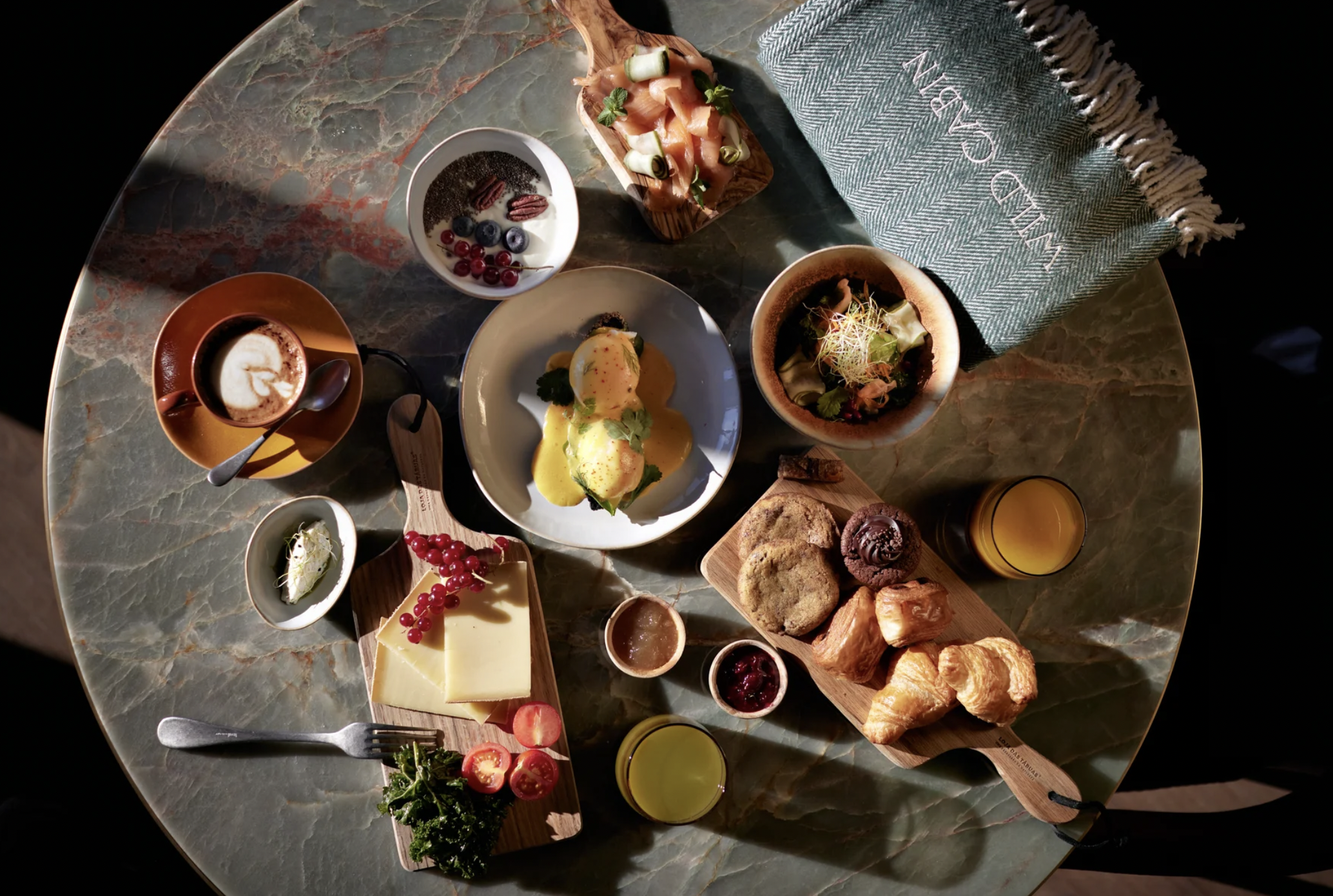
The vibe offers a contemporary take on chalet style. The 78 rooms and suites are decorated in local larch and oak, and all have terraces or balconies with alpine views over the likes of the Matterhorn and Mont Blanc. With four different saunas, a sensory flotation pod, two pools
and a whimsical relaxation area complete with 15,000 hanging “icicles” and views of a birch forest, the spa at Six Senses Crans-Montana makes après ski an afterthought.
You can even sidestep the cheese-heavy cuisine of this region in favour of hot pots and sushi at the property’s Japanese restaurant, Byakko. Doubles from around $1,205; Sixsenses.com
You may also like.
Watch of the Week: TAG Heuer Formula 1 | Kith
The legendary sports watch returns, but with an unexpected twist.
Over the last few years, watch pundits have predicted the return of the eccentric TAG Heuer Formula 1, in some shape or form. It was all but confirmed when TAG Heuer’s heritage director, Nicholas Biebuyck, teased a slew of vintage models on his Instagram account in the aftermath of last year’s Watches & Wonders 2023 in Geneva. And when speaking with Frédéric Arnault at last year’s trade fair, the former CEO asked me directly if the brand were to relaunch its legacy Formula 1 collection, loved by collectors globally, how should they go about it?
My answer to the baited entreaty definitely didn’t mention a collaboration with Ronnie Fieg of Kith, one of the world’s biggest streetwear fashion labels. Still, here we are: the TAG Heuer Formula 1 is officially back and as colourful as ever.
As the watch industry enters its hype era—in recent years, we’ve seen MoonSwatches, Scuba Fifty Fathoms, and John Mayer G-Shocks—the new Formula 1 x Kith collaboration might be the coolest yet.

Here’s the lowdown: overnight, TAG Heuer, together with Kith, took to socials to unveil a special, limited-edition collection of Formula 1 timepieces, inspired by the original collection from the 1980s. There are 10 new watches, all limited, with some designed on a stainless steel bracelet and some on an upgraded rubber strap; both options nod to the originals.
Seven are exclusive to Kith and its global stores (New York, Los Angeles, Miami, Hawaii, Tokyo, Toronto, and Paris, to be specific), and are made in an abundance of colours. Two are exclusive to TAG Heuer; and one is “shared” between TAG Heuer and Kith—this is a highlight of the collection, in our opinion. A faithful play on the original composite quartz watch from 1986, this model, limited to just 1,350 pieces globally, features the classic black bezel with red accents, a stainless steel bracelet, and that creamy eggshell dial, in all of its vintage-inspired glory. There’s no doubt that this particular model will present as pure nostalgia for those old enough to remember when the original TAG Heuer Formula 1 made its debut.

Of course, throughout the collection, Fieg’s design cues are punctuated: the “TAG” is replaced with “Kith,” forming a contentious new brand name for this specific release, as well as Kith’s slogan, “Just Us.”
Collectors and purists alike will appreciate the dedication to the original Formula 1 collection: features like the 35mm Arnite cases—sourced from the original 80s-era supplier—the form hour hand, a triangle with a dot inside at 12 o’clock, indices that alternate every quarter between shields and dots, and a contrasting minuterie, are all welcomed design specs that make this collaboration so great.
Every TAG Heuer Formula 1 | Kith timepiece will be presented in an eye-catching box that complements the fun and colour theme of Formula 1 but drives home the premium status of this collaboration. On that note, at $2,200 a piece, this isn’t exactly an approachable quartz watch but reflects the exclusive nature of Fieg’s Kith brand and the pieces he designs (largely limited-edition).

So, what do we think? It’s important not to understate the significance of the arrival of the TAG Heuer Formula 1 in 1986, in what would prove integral in setting up the brand for success throughout the 90’s—it was the very first watch collection to have “TAG Heuer” branding, after all—but also in helping to establish a new generation of watch consumer. Like Fieg, many millennial enthusiasts will recall their sentimental ties with the Formula 1, often their first timepiece in their horological journey.
This is as faithful of a reissue as we’ll get from TAG Heuer right now, and budding watch fans should be pleased with the result. To TAG Heuer’s credit, a great deal of research has gone into perfecting and replicating this iconic collection’s proportions, materials, and aesthetic for the modern-day consumer. Sure, it would have been nice to see a full lume dial, a distinguishing feature on some of the original pieces—why this wasn’t done is lost on me—and perhaps a more approachable price point, but there’s no doubt these will become an instant hit in the days to come.
—
The TAG Heuer Formula 1 | Kith collection will be available on Friday, May 3rd, exclusively in-store at select TAG Heuer and Kith locations in Miami, and available starting Monday, May 6th, at select TAG Heuer boutiques, all Kith shops, and online at Kith.com. To see the full collection, visit tagheuer.com
You may also like.
Best of Europe: Grand Hotel Des Étrangers
Fall for a Baroque beauty in Syracuse, Italy.
Sicily has seen a White Lotus–fuelled surge in bookings for this summer—a pop-culture fillip to fill up its grandes dames hotels. Skip the gawping crowds at the headline-grabbers, though, and opt instead for an insider-ish alternative: the Grand Hotel des Étrangers, which reopened last summer after a gut renovation.
It sits on the seafront on the tiny island of Ortigia in Syracuse, all cobbled streets and grand buildings, like a Baroque time capsule on Sicily’s southeastern coast.
Survey the entire streetscape here from the all-day rooftop bar-restaurant, Clou, where the fusion menu is a shorthand of Sicily’s pan-Mediterranean history; try the spaghetti with bottarga and wild fennel or the sea bass crusted in anchovies. Idle on the terrace alfresco with a snifter of avola, the rum made nearby.

As for the rooms, they’ve been renovated with Art Deco–inflected interiors—think plenty of parquet and marble—but the main asset is their aspect: the best of them have private balconies and a palm tree-fringed view out over the Ionian Sea. Doubles from around $665; desetranger.com
You may also like.
8 Fascinating Facts You Didn’t Know About Aston Martin
The British sports car company is most famous as the vehicle of choice for James Bond, but Aston Martin has an interesting history beyond 007.
Aston Martin will forever be associated with James Bond, ever since everyone’s favourite spy took delivery of his signature silver DB5 in the 1964 film Goldfinger. But there’s a lot more to the history of this famed British sports car brand beyond its association with the fictional British Secret Service agent.
Let’s dive into the long and colourful history of Aston Martin.






